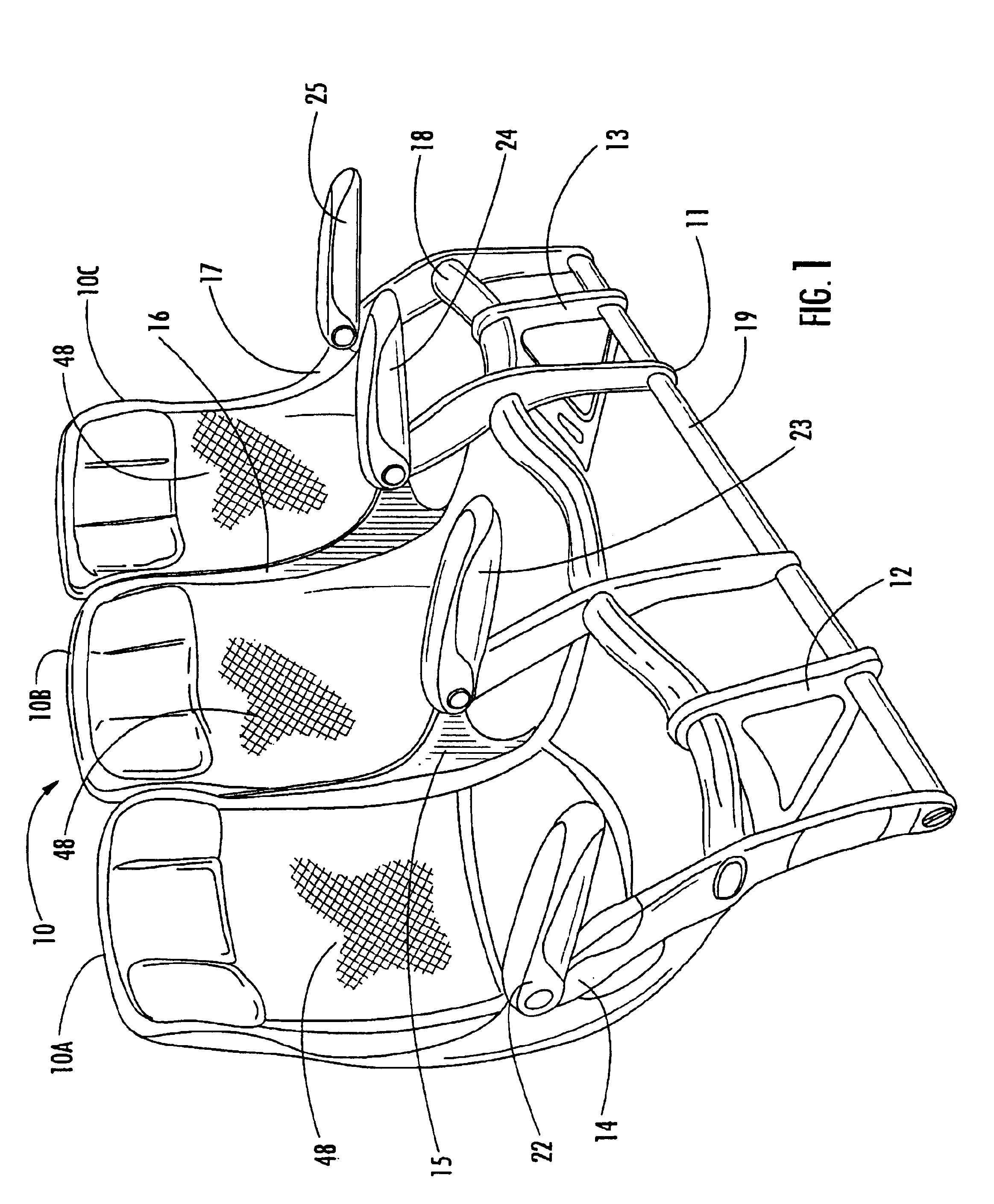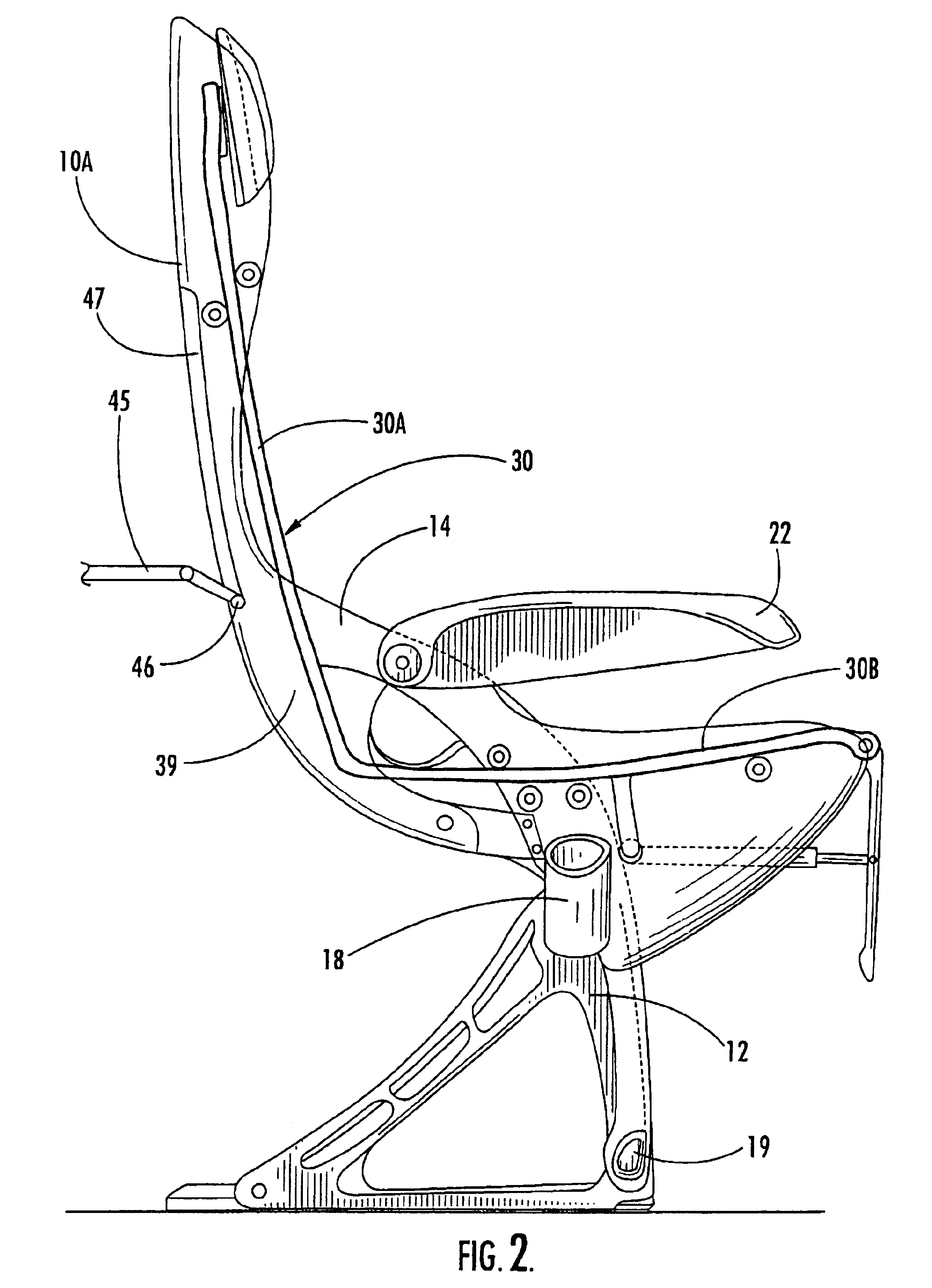Single beam aircraft passenger seat
a passenger seat and single beam technology, applied in the field of aircraft seats, can solve the problems of increasing design and assembly costs, adding weight to the overall seat design, and increasing the required inventory of parts
- Summary
- Abstract
- Description
- Claims
- Application Information
AI Technical Summary
Benefits of technology
Problems solved by technology
Method used
Image
Examples
Embodiment Construction
Referring now specifically to the drawings, a three-seat seat set according to the present invention is illustrated in FIG. 1 and shown generally at reference numeral 10 and comprises individual joined seats 10A, 10B, 10C that are movable from an upright to a recline position without encroaching on an aft-seated passenger. This type of seating is conventionally referred to as "coach" or "main cabin" seating as distinct from larger and more complex first class or business class seating. As will be seen below, the features of this invention are also applicable to first and business class seating. The seat set 10 includes a seat base 11. The seat base 11 includes a pair of leg assemblies 12 and 13 for being attached to a supporting surface by means of conventional track fittings such as disclosed in applicant's U.S. Pat. Nos. 4,776,533; 5,169,091 and 5,871,318. Four seat frames 14, 15, 16 and 17 are connected by single laterally-extending beam 18. A baggage guard rail 19 prevents bagga...
PUM
 Login to View More
Login to View More Abstract
Description
Claims
Application Information
 Login to View More
Login to View More - R&D
- Intellectual Property
- Life Sciences
- Materials
- Tech Scout
- Unparalleled Data Quality
- Higher Quality Content
- 60% Fewer Hallucinations
Browse by: Latest US Patents, China's latest patents, Technical Efficacy Thesaurus, Application Domain, Technology Topic, Popular Technical Reports.
© 2025 PatSnap. All rights reserved.Legal|Privacy policy|Modern Slavery Act Transparency Statement|Sitemap|About US| Contact US: help@patsnap.com



